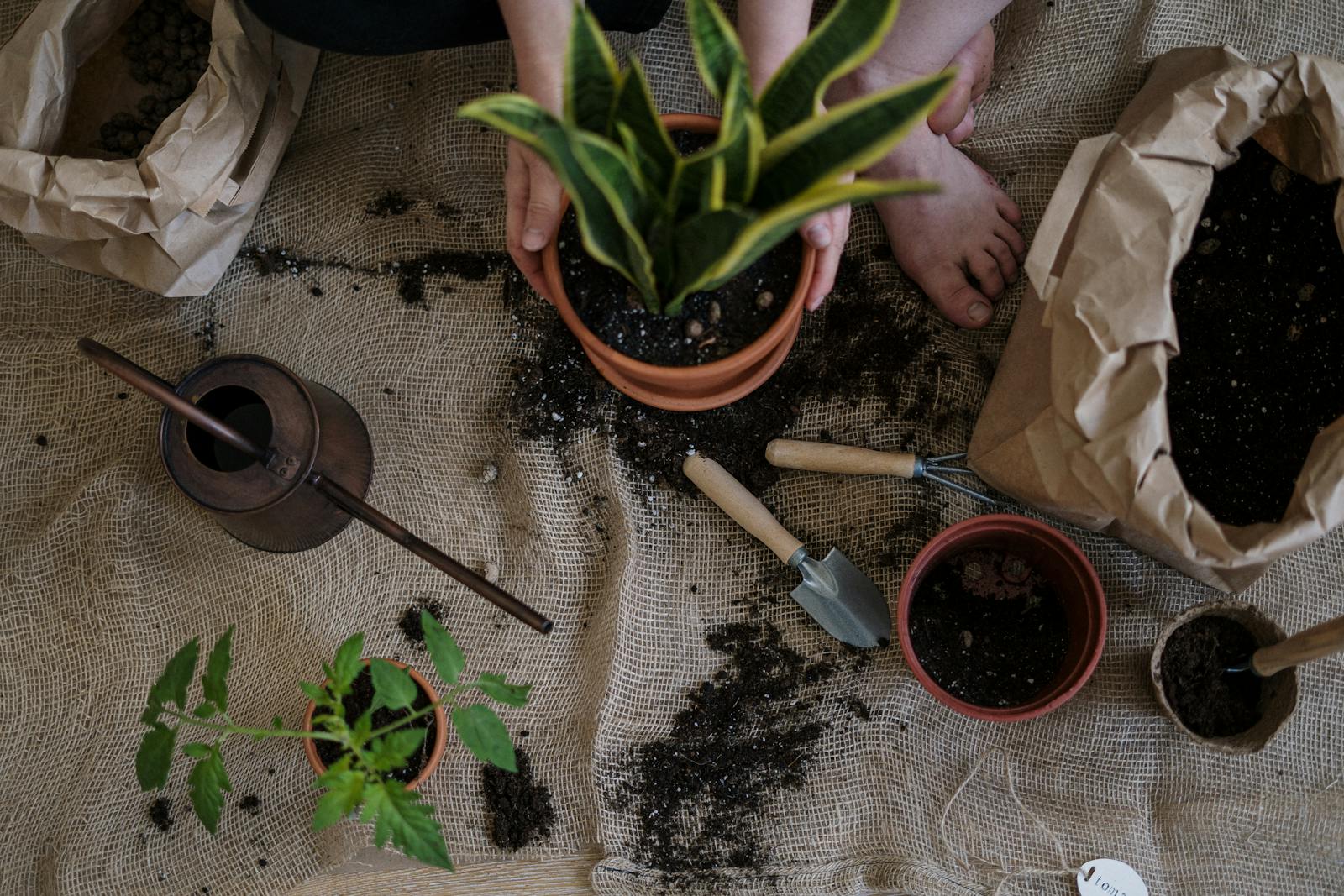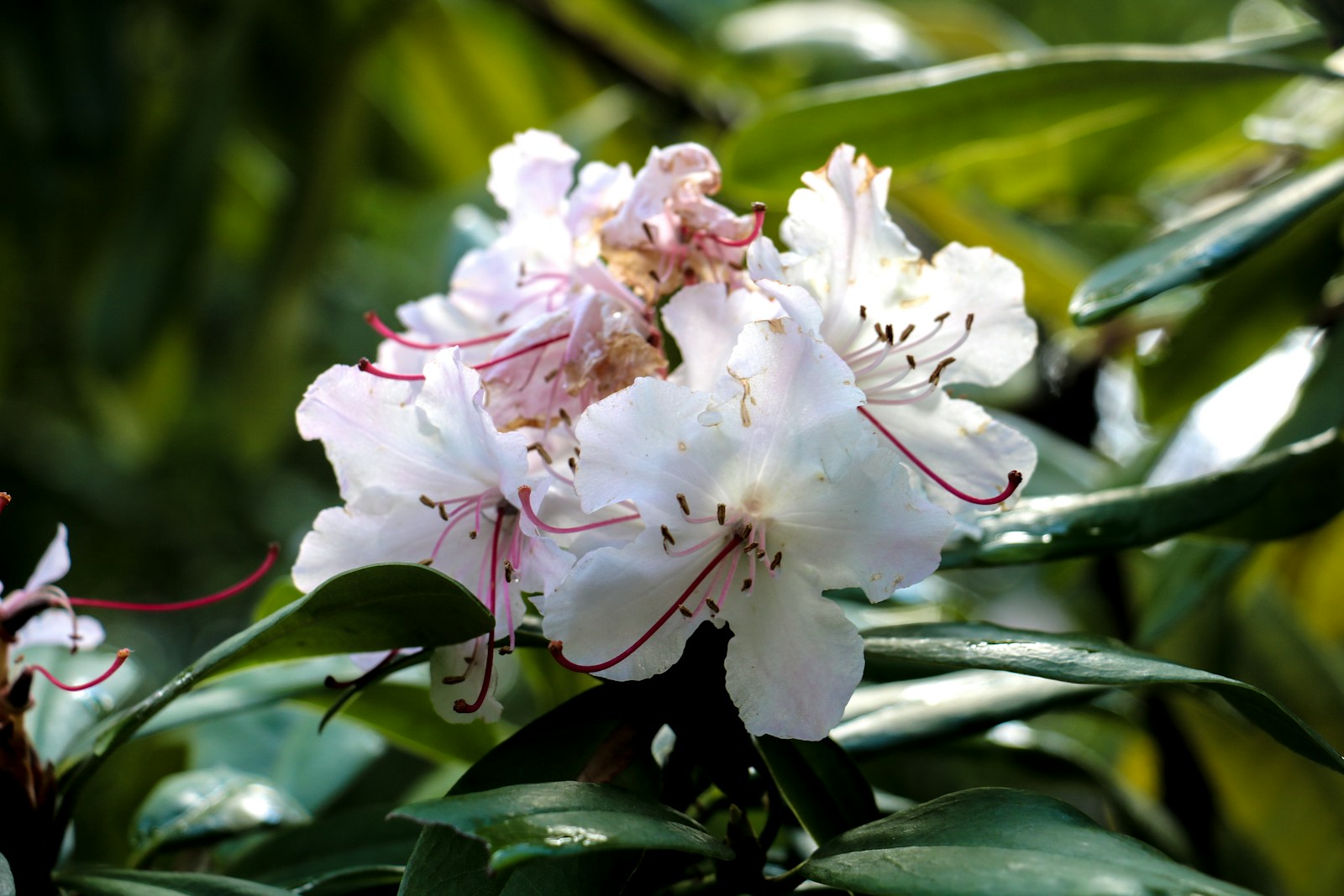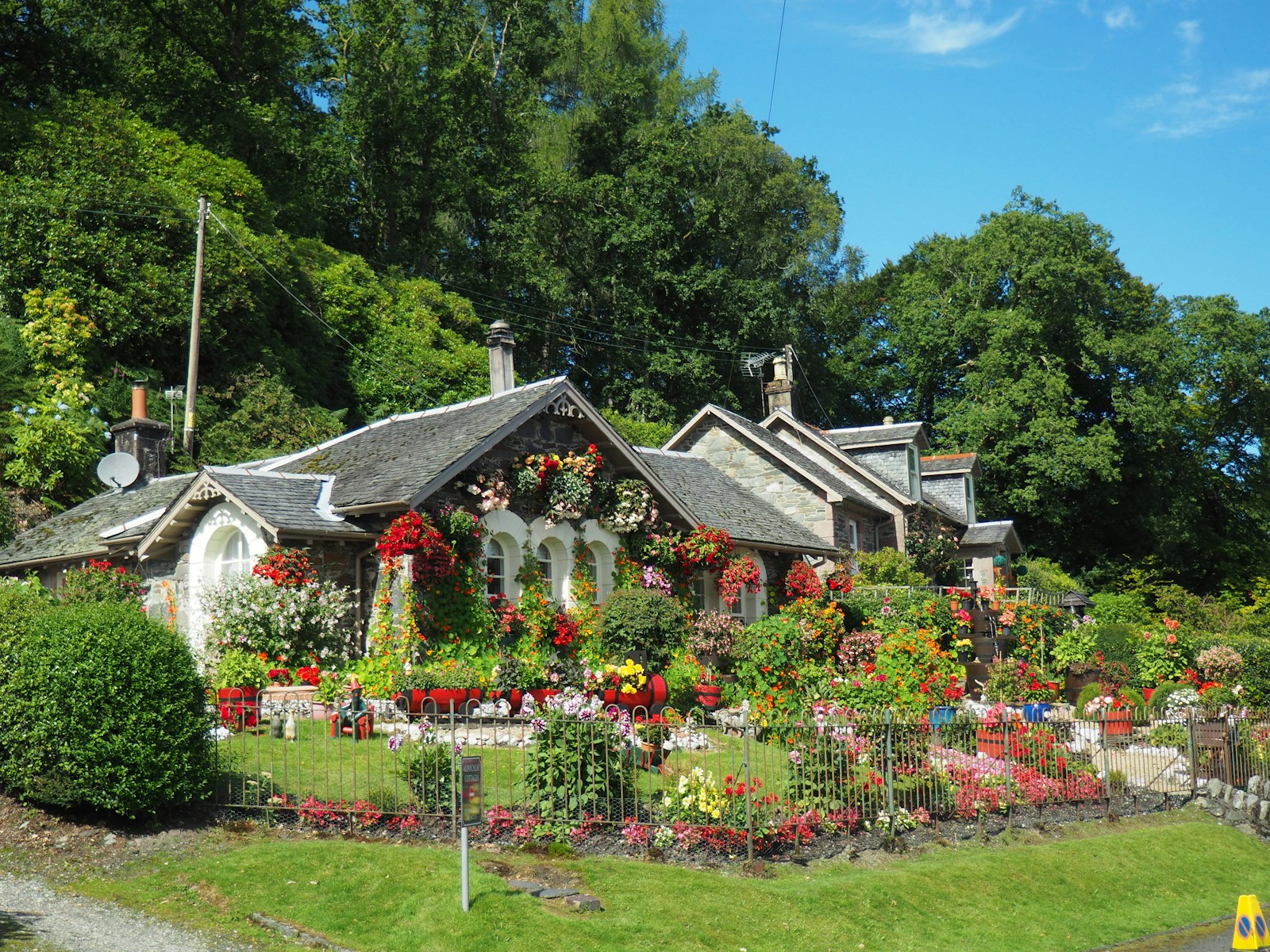10 Common Gardening Mistakes Beginners Make—and How to Avoid Them
Overwatering Plants Reduces Root Strength
One of the most frequent gardening mistakes new growers make is overwatering. While the intention is good—after all, plants need water—too much moisture can drown roots, encourage fungal diseases, and inhibit oxygen absorption. This causes the plant to weaken from below, often leading to stunted growth or sudden collapse. For comprehensive watering techniques, check out our beginner’s guide to watering tips for plants.
The fix is simple but requires consistency. Check soil moisture before each watering by inserting your finger an inch into the soil. If it feels damp, hold off. Many plants prefer slightly dry conditions between waterings. Adding mulch can help retain moisture more effectively and reduce evaporation, minimizing the need for constant watering.
By learning how to properly manage hydration, you’ll avoid this widespread error. Thoughtful watering habits not only keep plants alive but make them stronger and more resistant to disease over time.
Choosing the Wrong Plants for Your Climate
Another classic gardening mistake is ignoring plant hardiness zones. It’s tempting to pick vibrant flowers or exotic herbs from garden centers without checking if they’re suited to your climate. However, planting non-native species can lead to underperformance or complete failure.
Always refer to the USDA Plant Hardiness Zone Map (or its equivalent in your region) before purchasing. Choose varieties that thrive in your specific zone, taking into account temperature ranges, humidity, and local weather patterns. A plant’s label typically lists its ideal growing conditions—read it carefully.
Matching the plant to your environment increases your chances of success. It also minimizes maintenance, because native or zone-appropriate plants are better adapted to natural soil and weather conditions. Making informed choices prevents a great deal of frustration for novice gardeners. Discover what to plant each month in our ultimate seasonal planting guide.
Neglecting Soil Quality Hurts Long-Term Growth
Soil is more than just the ground your plants sit in—it’s a complex system filled with organisms, nutrients, and structure. One of the most detrimental gardening mistakes is to overlook this foundation. If your soil lacks nutrients or drains poorly, plants won’t reach their full potential, no matter how well you water or fertilize.
Start with a soil test. Home kits are affordable and easy to use. They measure pH and nutrient content, guiding you on what amendments to add. Compost is a go-to solution, as it enriches the soil with organic matter and improves texture. Other natural additives like bone meal, perlite, or aged manure can help address specific deficiencies. Equip yourself with the right tools for soil care from our essential beginner gardener tools list.
Healthy soil fosters healthy roots, and healthy roots mean thriving plants. Don’t wait for visible problems to emerge—build good soil from the beginning and you’ll avoid countless headaches later.
Planting Without a Layout Leads to Chaos
Jumping into planting without a garden layout might seem spontaneous and fun, but it’s a planning mistake that can backfire quickly. Without structure, you risk placing shade-loving plants in full sun, tall crops where they block light, or incompatible species too close together. The result is a messy, inefficient garden that requires constant correction. Learn how to design efficient layouts, especially in limited areas, with our small space gardening tips.
Creating a layout helps you visualize spacing, sun exposure, and plant groupings. Use a basic sketch or digital planner to map out where everything will go. Consider factors like mature plant size, bloom time, and water needs. Planning also helps you rotate crops and avoid soil depletion in future seasons.
Even a simple blueprint can turn confusion into clarity. A few minutes of planning now will save you hours of replanting and reorganizing later. This small effort is one of the best ways to avoid early-stage gardening mistakes.
Forgetting About Sunlight Requirements
Every plant has specific light needs, and misjudging them is one of the more common gardening mistakes. While some plants like tomatoes and sunflowers need at least six hours of full sun, others like hostas and ferns prefer shade. Ignoring this crucial factor leads to leggy stems, poor flowering, or slow growth.
Spend time observing how sunlight moves through your garden throughout the day. Note areas that receive full sun, partial shade, or dappled light. Then, match plants accordingly. This step doesn’t just improve plant health—it also prevents wasting time and money on replanting or failed crops.
Understanding light exposure transforms your garden’s potential. Proper placement makes plants more productive, attractive, and easier to care for throughout the season.
Overcrowding Plants Stunts Their Growth
Packing too many plants into a small space might seem efficient, but it’s a gardening mistake that often leads to poor airflow, increased competition for nutrients, and higher disease risk. Plants need room to grow, and ignoring spacing guidelines limits their development and overall health.
Seed packets and plant labels typically include recommended spacing for a reason. When you follow these guidelines, plants receive the light and air they need, reducing susceptibility to mildew, fungus, and insect infestations. Crowding also makes harvesting more difficult and increases maintenance needs.
Plan your garden with spacing in mind from the outset. Giving each plant adequate room ensures healthier growth, greater yields, and fewer headaches throughout the season. Avoiding this mistake helps your garden breathe, both literally and figuratively.
Skipping Mulch Creates Avoidable Problems
Mulch is often treated as optional, especially by beginners. But skipping it is one of the more subtle gardening mistakes with far-reaching consequences. Without mulch, soil is exposed to extreme temperature shifts, moisture evaporates more quickly, and weeds gain a competitive advantage. Understand the advantages of mulching by exploring our detailed guide.
A 2–3 inch layer of organic mulch—like wood chips, straw, or shredded leaves—helps stabilize soil temperature, retain moisture, and suppress weeds. It also breaks down over time, adding valuable nutrients to the soil. Around young plants, mulch acts as a protective barrier that promotes resilience and reduces watering needs.
Mulching is a small task with big rewards. It improves the health of your garden’s ecosystem and makes day-to-day upkeep much easier. Don’t underestimate this often-overlooked step.
Using the Wrong Tools Slows You Down
In any craft, using the wrong tools makes everything harder—and gardening is no exception. Many beginners make the mistake of using poorly suited or low-quality tools, which can cause damage to plants and strain to the gardener. Investing in the right tools pays off both in time and results.
Essentials like a sharp hand pruner, ergonomic trowel, strong digging fork, and well-fitted gloves can dramatically improve your gardening experience. Quality tools reduce the effort needed for basic tasks, decrease injury risk, and last longer. Dull blades and fragile handles, on the other hand, can ruin your momentum.
Good tools don’t have to be expensive, but they should be sturdy and functional. Choosing wisely prevents a host of frustrating gardening mistakes and keeps your workflow smooth and efficient.
Improper Pest Management Escalates Quickly
At some point, every garden faces pest issues. But failing to monitor or manage pests early is one of the more damaging gardening mistakes. Pests such as aphids, caterpillars, and slugs can decimate crops in days if left unchecked. The key is prevention and early detection.
Regularly inspect leaves—especially the undersides—for signs of infestation. Natural remedies like neem oil, insecticidal soap, or introducing beneficial insects such as ladybugs can keep pest populations in check. Avoid reaching for harsh chemicals, which can damage beneficial microbes and pollinators.
Staying ahead of pests reduces the likelihood of major outbreaks and protects your plants long-term. Effective pest management is less about reaction and more about daily vigilance and gentle intervention.
Ignoring Seasonal Timing Reduces Success
Planting at the wrong time of year is a gardening mistake that beginners often make in their eagerness to get started. Each plant has an ideal window for germination, growth, and harvest based on temperature, daylight, and regional climate. Misaligned timing leads to stress, poor yields, and even plant death.
Use a planting calendar tailored to your specific zone to schedule sowing and transplanting. Know your area’s last frost date in spring and first frost date in fall, and plan accordingly. Some crops thrive in cooler weather, while others need consistent heat to perform well.
Timing isn’t just about productivity—it also affects plant health and disease resistance. When you plant with the seasons, your garden runs like clockwork. Avoiding this timing-related mistake gives every seed the best chance to succeed.
Failing to Rotate Crops Wears Out Soil
Replanting the same crops in the same soil each year is a gardening mistake that gradually depletes nutrients and invites disease. Certain plants, like tomatoes and cucumbers, are heavy feeders and can strip the soil of essential elements if not rotated. In addition, recurring crops make it easier for pests and diseases to establish themselves season after season.
Crop rotation involves changing plant families in a specific bed each year. For example, follow nitrogen-fixing legumes with leafy greens or root vegetables. This balances nutrient use and interrupts pest life cycles. Even small gardens benefit from rotation if managed thoughtfully.
Over time, rotating crops rejuvenates soil health and reduces dependence on fertilizers or pesticides. Avoiding this gardening mistake will lead to healthier plants and more reliable harvests year after year.
Neglecting Weeds Gives Them the Upper Hand
Weeds are more than just unsightly—they compete with your plants for water, nutrients, and sunlight. Letting them grow unchecked is a gardening mistake that can quickly spiral out of control. Many weeds are aggressive and resilient, spreading rapidly if not addressed early.
The key is consistency. Check your garden weekly and remove weeds as soon as they appear. Mulch helps prevent weed seeds from germinating by blocking sunlight. Hand-pulling or using a hoe is often more effective than relying solely on herbicides, which can damage desirable plants if used carelessly.
Staying on top of weeds keeps your garden cleaner, healthier, and more productive. It also reduces long-term maintenance and preserves soil structure. Don’t underestimate how quickly a few weeds can become a major problem.
Labeling Plants Prevents Confusion Later
It might seem like you’ll remember what you planted and where—but that’s rarely the case. Forgetting to label plants is a gardening mistake that leads to confusion, mismanagement, and lost data. As seedlings grow, they often look similar, making it easy to mix them up.
Use waterproof garden markers and weather-resistant tags to record plant names and planting dates. This helps you track growth, spot irregularities, and make informed decisions about pruning, feeding, and harvesting. In larger gardens, maintaining a simple planting chart or journal can offer additional clarity.
Labeling takes only a few minutes but saves you from costly mix-ups. It’s a small organizational step that leads to a more efficient and rewarding gardening experience.
Harvesting Too Early or Too Late Affects Flavor
Timing your harvest is just as important as planting it right. Many gardeners make the mistake of picking produce either too soon or too late. Early harvests can result in underdeveloped flavors and textures, while late ones may lead to spoilage or decreased nutritional value.
Each crop has unique indicators for ripeness. Tomatoes should be fully colored and slightly firm. Zucchini is best when small and tender. Leafy greens like spinach and kale should be harvested before they bolt or turn bitter. Refer to seed packet guidelines and use your senses—look, feel, and even taste—to determine the perfect moment.
Perfectly timed harvesting ensures the best flavor, texture, and nutrient retention. This is one gardening mistake where attention truly pays off at the dinner table.
Forgetting to Enjoy the Process Steals the Joy
In the rush to “do everything right,” many gardeners forget why they started in the first place. Focusing too much on outcomes and avoiding mistakes can ironically become the biggest gardening mistake of all—it takes the joy out of the process.
Gardening is meant to be relaxing, rewarding, and even therapeutic. Take moments to appreciate what you’ve built. Watch bees pollinate flowers, smell fresh soil, and celebrate small victories like your first bloom or ripe fruit. When setbacks happen—and they will—treat them as learning opportunities, not failures.
Embracing the experience keeps you motivated and grounded. Gardening should nourish the spirit as much as the soil. Avoid letting stress replace satisfaction, and you’ll cultivate more than just plants—you’ll grow happiness, too.
Frequently Asked Questions
What are the top gardening mistakes beginners make?
Some of the most common gardening mistakes include overwatering, planting without a plan, ignoring soil quality, and misjudging light or seasonal timing. Beginners also tend to overcrowd plants, skip mulching, and use poor tools. Each of these can limit plant health and reduce garden productivity. By learning from these errors early on, you can avoid frustration and enjoy a more successful gardening experience. Focus on consistent care, observation, and planning to sidestep these beginner pitfalls effectively. Additionally, staying informed about the specific needs of each plant species can greatly enhance your gardening success. By recognizing common gardening pitfalls to avoid, such as neglecting pest control and failing to rotate crops, you can create a thriving ecosystem in your garden. Regularly updating your gardening techniques based on your observations will also contribute to a more fruitful and enjoyable gardening journey. In addition, taking the time to educate yourself about plant varieties and their specific needs can make a significant difference in your gardening efforts. To help you get started, consider seeking out essential gardening tips for beginners. These guidelines can provide valuable insights to enhance your gardening success and help you cultivate a thriving garden.
How can I tell if I’m overwatering my garden?
Signs of overwatering include yellowing leaves, soggy soil, mold or mildew around stems, and root rot. A simple test is to stick your finger into the soil about an inch deep. If it feels wet, hold off on watering. Using a moisture meter can also help you gauge soil conditions accurately. Many plants prefer slightly dry soil between waterings. Understanding the needs of each species will help prevent this common gardening mistake and support stronger root systems.
Why is soil testing important before planting?
Soil testing reveals vital information such as pH levels, nutrient deficiencies, and organic matter content. Skipping this step is a gardening mistake that often leads to poor growth and low yields. A basic test helps you choose the right amendments, such as compost, lime, or fertilizer, to improve soil health. Knowing your soil conditions allows you to tailor care for specific plants, ensuring they receive the nutrients they need from the start. Healthy soil is the foundation of a thriving garden.
How does mulching improve my garden?
Mulching is an essential yet often overlooked part of gardening. It regulates soil temperature, retains moisture, and suppresses weed growth. Organic mulch—like straw, shredded leaves, or bark—also adds nutrients as it breaks down. Not using mulch is a gardening mistake that leads to rapid moisture loss and more frequent watering. In addition, mulch provides a clean barrier between soil and plants, which can prevent rot and reduce the spread of soil-borne diseases. It’s an easy upgrade with lasting benefits.
What’s the best way to manage garden pests naturally?
Managing pests without chemicals starts with daily observation. Check leaves, especially the undersides, for signs of damage or eggs. Introducing beneficial insects like ladybugs and using neem oil or insecticidal soap can help maintain balance. Companion planting—like pairing marigolds with tomatoes—can also deter pests. Ignoring early signs is a gardening mistake that often leads to larger infestations. By staying proactive and using natural methods, you can protect your plants while keeping the garden safe for pollinators and pets alike.
© 2025 GardeningandDecor.com. All rights reserved.



